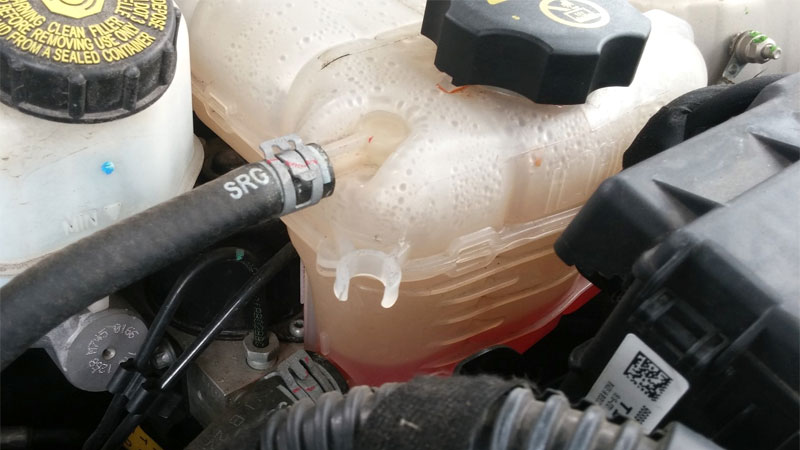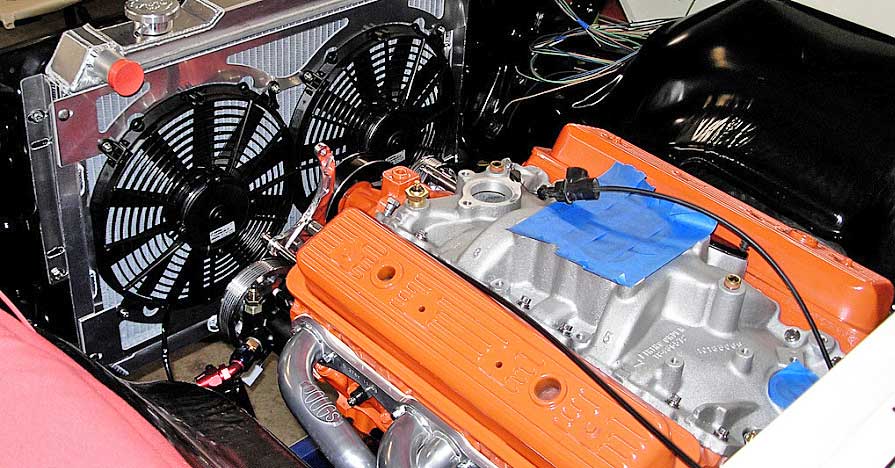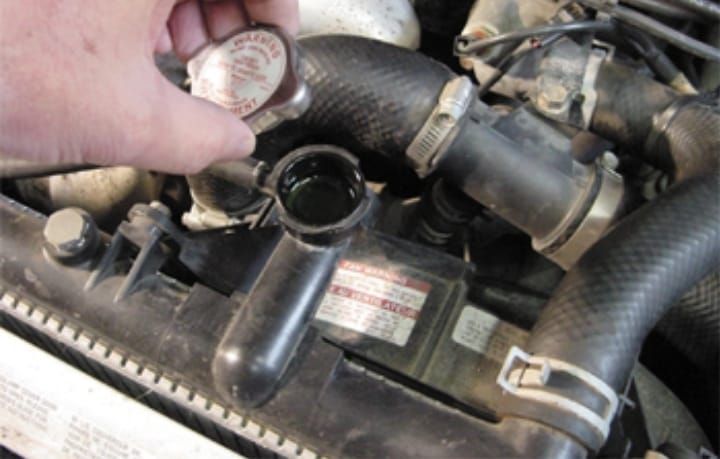Coolant Boiling in Reservoir: 7 Causes & Solutions
During the operation of the car, drivers must have been in a situation: coolant boiling in reservoir or bubbles in coolant reservoir. What will happen to your car?
Our answer is: If you don’t take action on time, it can cause damage to your engine. So if you are finding the reasons and the way how to handle the above phenomenon, the article is written for you.
Is Car Coolant Really Necessary For Your Car?
When the engine is running, the mixture of air and fuel is burned in the engine cylinders, producing a huge amount of heat. However, only a part of the heat is successfully converted, and the rest is radiated out, causing the engine temperature to rise. If the engine temperature rises above the allowed threshold, the oil will not have a good lubricating effect, leading to increased friction, and causing rapid wear and damage to machine parts.
That’s the reason your car needs coolant fluid. Engine coolant is a liquid mixture of water and antifreeze located in a vehicle’s radiator. As the name suggests, coolant fluid has the function of “cooling” your engine, contributing to the car operating smoother. More specifically, coolant will limit engine overheating in hot climates and freezing in extreme cold. In addition, this fluid can also prevent rust and corrosion of the parts it passes through, including the radiator, heater, and pump.
If you read this far, you probably know the importance of car coolant. When your car lacks cooling fluid, your engine will definitely overheat, and the temperature will increase when operating. This can cause an explosion, which is extremely dangerous. Causing your car to stall in the middle of the road while in traffic. At the same time, it affects the car components.
What Is The Boiling Point Of Car Coolant?

Knowing about the boiling point of the antifreeze or coolant is very important for drivers. So when talking about the coolant or antifreeze, what is their boiling point? As we know, 212F is the boiling point of pure water and it will freeze at 32 degrees Fahrenheit. However, the boiling point of your car coolant is higher than water, the coolant boils at temperatures between 300-400 degrees Fahrenheit.
When you choose the coolant for your car, the important factor to consider is the climate in your country. If you are in cold weather, you should pick up the coolant with a higher boiling point because it will help your engine not freeze. Otherwise, in a warm climate, you can choose the coolant or antifreeze that has a lower boiling point. Make sure you check the recommendation of your manufacturers before deciding to buy the coolant or antifreeze.
Why Is My Coolant Boiling In Reservoir?
It’s an abnormal situation when your coolant fluid boils during the driving process. Your car coolants will start to boil or appear to bubble when the engine temperature increases above the boiling point level. We can say that all the reasons for engine overheating can also lead to the coolant will boil.
Diagnosing the cause early can help you minimize damage to your car. There are some faults that cause the coolant to boil in the reservoir, but the most common are the following:
Damaged head gasket
A head gasket has a vital role in sealing the combustion chamber in your engine so that your car can make the compression to maintain the engine power as well as avoid the harmful emission from the combustion. However, the most important function is to keep the cooling fluid from leaking anywhere else.
What happens If your head gasket is blown, a head gasket failure will make your engine work in extreme conditions with overheating because, at that time, this allows engine coolant, gas, and oil to mix together. And when the temperature in the engine reaches a boiling point, it will make your coolant in the reservoir boil. In case, you notice white smoke coming out from under the bonnet or the cooling lamp is glowing, check the coolant reservoir immediately. Moreover, when the head gasket fails, the air can seep into the coolant reservoir and make the bubble phenomenon in your fluid.
>> Related post: A Cracked Head Gasket: Common Symptoms And Repair
Bad cooling fan

When the car is in operation, the excess heat generated during air compression, fuel combustion, and the friction of mechanical parts needs to be released. The car radiator fan has the role of coordinating with the coolant to increase the cooling efficiency of the engine when the above heat is released.
If your cooling fan breaks due to a blown fuse, damaged wire, failed fan clutch, or corrosion, it will make your coolant in the reservoir start boiling because the fan doesn’t supply enough air circulation when your car stops. Whatever the cooling fan setup is, its primary goal is to cool the coolant. If it somehow fails, you may find your coolant is boiling.
Faulty thermostat
The main symptom of a bad thermostat is related to overheating your engine. This can be easily detected because the temperature gauge on your car may be abnormally high. The valves being stuck in the closed position can be the reason for this situation. As a result, the coolant will not be able to flow and boil.
The function of a thermostat is open and close at the correct intervals to regulate the coolant in and out of the radiator. When this part doesn’t work properly, it will not open at the exact time and lead to the coolant system overheating.
Failed radiator cap
The radiator cap is often overlooked as part of maintenance, but it is considered an essential part of the cooling system. A radiator cap is basically a release valve, when the coolant reaches a high temperature, the release valve opens up, and makes sure your cooling system keeps under pressure.
When this cap is stuck, it doesn’t have the ability to maintain sufficient pressure to lower the boiling point of the coolant causing inadequate heat absorption from your engine. The engine can also overheat due to air pockets in the coolant caused by the radiator cap not working properly and air expanding rapidly at high temperatures. This will make the coolant in the reservoir boils.
The water pump not working properly
Water pumps usually last a long time 100000 miles or more on average but given the fundamental role that they play an important role in regulating engine temperature. It is the part that continuously injects coolant into the car engine to prevent the engine from overheating.
What happens if your water pump failed? It will make the temperature in your engine reach an unsafe level. This is usually indicated by a high engine temperature or engine temperature warning light on the dashboard. At this time, the coolant gets hot, boils, and gives off white smoke as well as increasing the whole car’s heat.
Low coolant level
Driving with a low coolant will make the airlock into your cooling system, and create the foam fluid. The airlocks will disrupt the flow of the cooling system, which will cause the engine to overheat. You may notice the warning that your coolant level is low due to the light on your dashboard, but if you don’t, the common consequence is your engine will start to boil and spew out steam. – this will show itself as more steam from your engine.
Clogged radiator
When you notice your coolant starting boiling, don’t forget to check the radiator. Like other car parts, radiators can also be affected by the consequences of wear and tear. Eventually, debris can find its way into the radiator and begin to clog it. Remember that the radiator is very important in ensuring that the cooling system operates effectively. So when your radiator gets clogged, overheating the engine is the popular result, and of course, it will make the temperature of the coolant abnormally high.
How To Deal With The Coolant Boiling In Reservoir?
As we mentioned in the above part, there will be many reasons why your coolant is boiling in the reservoir. So if you don’t pinpoint the exact cause, it can lead to serious engine consequences. Therefore, you should take the car to a mechanic to determine the cause of the coolant boiling and then fix it immediately. But if you want to learn how to fix it, here are some fixes you can refer to.

Change the bad thermostat
When the thermostat is stuck, it prevents the coolant from circulating in the engine to the radiator. In this case, replacing the thermostat is an inevitable thing. Replacing or fixing a bad thermostat problem can be quite an easy task for most DIY enthusiasts, while others don’t know where to start.
If you have a good experience in car repair you can replace the thermostat by yourself otherwise you can take your car to a trusted mechanic. The replacement cost of a thermostat ranges between $70 and $450, depending on your car model and labor costs. A thermostat costs about $20 to $50, and factory labor costs between $50 and $400.
Fix an air pocket in the reservoir
You can easily handle the problem by filling it properly with coolant. At the same time, changing the coolant, the used air is trapped inside the tank, causing air bubbles and making the coolant temp reach high. Therefore, to ensure there is no air in the reservoir, start the engine by turning off the radiator cap. It will help to remove the air from your tank.
Replace the bad radiator or radiator cap.
You can check the radiator cap with a pressure gauge. If the pressure drops during the test, try cleaning the cap and try again. If it still gives the same results again, you need to replace the radiator cap right away. Replacing the cap can be easy to do, in general, the radiator cap is quite cheap and you can buy one at any repair center but make sure the right pressure rating.
When properly maintained, the radiator can last up to 8 to 10 years. However, when you notice the bubble or coolant boiling, you need to inspect or replace your car radiator. A clogged radiator can make your coolant overheat and may eventually boil which can lead to engine damage.
To fix this, you can clean the exterior fins annually and flush them according to the manufacturer’s maintenance schedule. When the radiator is beyond repair, you should change this part. Unfortunately, radiators are an expensive piece of equipment and often a labor-intensive process. The cost for radiator replacement varies from $182 up to $921.
>> Read more: 8 Common Symptoms of a Clogged Radiator You Must Know
Final Thoughts
We are sure drivers had the desired answer to the question Why is my coolant reservoir boiling? So if you encounter this situation while driving, you should pull over and turn off the car as soon as possible to avoid further damage. Hopefully, the information we share about the cause and solution for this phenomenon will help you drive safely.














